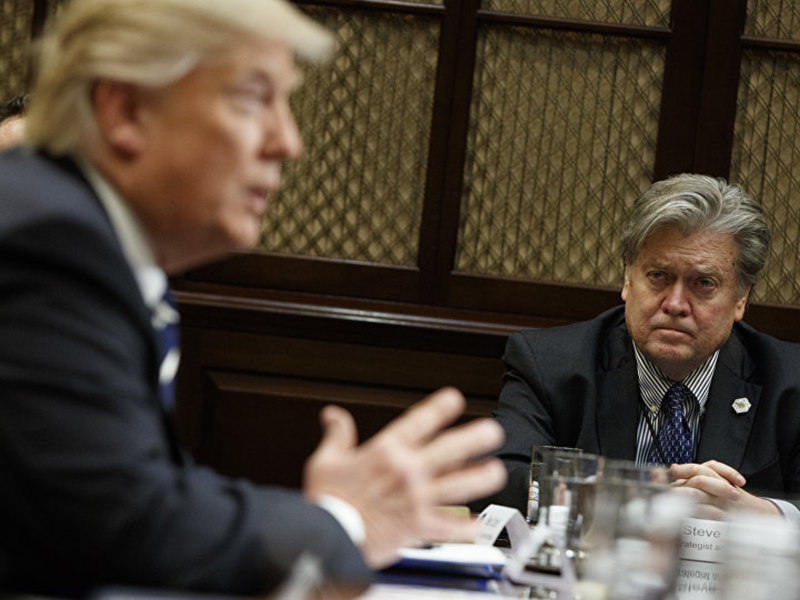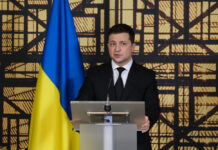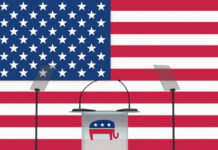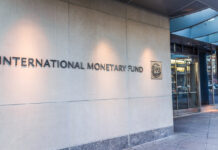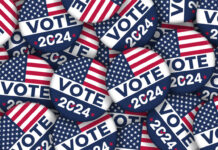For Russians, Mr. Trump presents at least the chance of a new course in US/Russian relations. Putin hopes to see the US stop its liberal interventionist policies – a position in accord with Mr. Bannon’s. A return to chilled relations will reward Russia and the United States’ respective military-industrial-intelligence complexes.
The central figure in President Donald Trump’s administration is Steve Bannon, but for how long, nobody knows. Mr. Bannon sees the fate of the US in apocalyptic terms. His world view centres on the supposition that the West, or as he sees it, Judeo-Christendom, is locked into a global fight with Islamic fundamentalist terrorism presenting an existential threat to the United States. Two, and related to point one, (but which goes beyond the scope of this essay), is that there exists a ‘real’ capitalism connected to that Judeo-Christendom. This version of capitalism produces broad-based prosperity. According to Bannon, the United States has departed from this model and must return to it or else collapse into the abyss.
Addressing point one, outreach to Russia becomes readily understandable given Mr. Bannon’s outlook. Under Vladimir Putin’s rule, Russia showed no mercy crushing Islamic separatists in Chechnya. The victory was total and spared no destructive power. Indeed, so much artillery fire was rained down on Chechnya that Russia dipped into still existing World War II surplus ordnance to complete the job. Additionally, Putin helped the United States in Afghanistan by providing rail transport corridors through Russia. Moreover, Russian intelligence picked up on the terror threat posed by the Dagestanis that bombed the Boston Marathon in 2013. The United States failed to act on Russia’s intelligence and consequently suffered. Moreover, Bannon sees Russia as a Christian state, while he thinks Europe has gone secular and soft. Mr. Putin indeed sees Russia as Christian, while also emphatically affirming it is a multi-ethnic federated state. This last point is lost on Mr. Banon’s Brietbart, Alt-Right, adherents, but then nuance is not their strength.
Then there is Syria. Again, Russia presents its role here as taking the fight to Islamic terrorists. A corridor has opened connecting terrorists in Syria to the Russian Caucasus, a distance of only several hundred kilometres. This makes Russia in Syria a decidedly serious as a player in the fight against terrorism from the perspective of Mr. Bannon. Meanwhile, the US under President Obama’s administration, referenced the need to support Syria’s “moderate Islamic opposition”. Yet, as Obama-era ambassador to Russia, Michael McFaul, noted in an interview last year, “I’m on TV all the time where I have to use the phrase “moderate opposition”, and I don’t know what it means. The President gave a speech yesterday—we’re supporting ‘Syrian forces’ he said, right? Who are they? What are they?” The US complains Russia has not, as promised, fought terrorism in Syria, but merely targeted the enemies of Bashar Al-Assad’s government. For Mr. Putin the realist, this is synonymous with fighting terrorism, as many of Mr. Assad’s enemies are in fact radical Islamists funded by Saudi Wahhabists (who previously funded the Afghani Mujahadeen that eventually morphed into Al-Qaeda). These same forces in Syria are also funded by the Qatari government. The Qataris (Sunni Muslim allies of the Saudis) wish to run a natural gas pipeline to Europe through Syria. Presently, this project is blocked by Assad’s Alawite Shia government that has given the gas pipeline transit contract to their allies, Shia Iran, even if the former is largely a secular government, while the latter is decidedly not so. Assad knows that if his government is toppled, he could meet a fate similar to that of Libya’s Muammar Gaddafi. Mr. Gaddafi’s video recorded end arrived with him being sodomised by a bayonet, while begging not to be shot, which in due course he was. This was immediately followed by an interview with the then US Secretary of State, Hillary Clinton (who advocated for US intervention in Libya) stating, “We came. We saw. He died”, followed by laughter. While one might make the case that Mr. Gaddafi deserved no better end, the manner of his execution was no doubt seen by Mr. Assad. Mr. Putin has reputedly viewed the tape of Gaddafi’s gruesome execution no less than three times. In short, neither of these leaders intends to exit this life in the same manner and suspect that some US policymakers intended to reprise Gaddafi’s fate with Mr. Assad, if not for Mr. Putin. When it comes to relations with Trump, Mr. Putin is looking for another reset, but likely has few illusions about its prospects given the depth of US hostility to him, from both policy makers and opinion makers in the US. Nonetheless, for Russians, Mr. Trump presents at least the chance of a new course in US/Russian relations. Putin hopes to see the US stop its liberal interventionist policies – a position in accord with Mr. Bannon’s – that destabilised North Africa and the Middle East, thus providing space for groups like ISIL to emerge and spreading their influence to Syria
Then there is NATO. Economic conservatives (along with Messieurs Trump and Bannon) often claim Europe gets a free-ride on security via the US. Few NATO countries spend the recommended 2% of GDP on defence. Among exceptions are Greece, a country viewing its fellow NATO oarsman, Turkey, as a future “Ottoman” occupier biding its time for a return. Of course, such heavy defence spending, largely borrowed from Germany to buy German weapons, contributed to Greece’s fiscal woes. This, plus democratic nature of tax evasion (near all Greeks do it, their public sector excepted) in the home of democracy, contributed further to Greece’s debt crisis. While Europe has been subsidised on defence, whenever Europeans have discussed forming an independent defence force, the US has shown displeasure and Europe drops it. Thus, Donald Trump’s statements regarding NATO while understandable, have been reckless in their timing and manner of communication.
President Trump’s NATO comments especially unnerved the Balts and Poles. Poland was partitioned by Russia, Prussia and the Astro-Hungarian Empire in the late 18th century. By 1795, it no longer existed. After a brief return of independence in 1918, it again lost it to Germany’s invasion in 1939, followed by partial Soviet annexation of territory and the imposition of a Soviet proxy government of its remaining territory until 1989. Thus, it is suspicious of Russian intentions. Then there are the Balts. These small countries collectively possess population numbers well shy of New York City’s, yet often punch above their weight in international affairs. Caught in the cross-hairs of WW II, they were occupied by the USSR to provide ‘strategic depth’ in case of war with Germany. Stalin, fully expecting the future return of an aggressive Germany, as happened following WW I, decided to keep the Baltic states for strategic depth in expectation of a WW III. This had tragic consequences. Thousands of Balts in leadership positions were shot. Hundreds of thousands fled their countries as the Red Army returned in 1944. As the Cold War emerged in the late 1940s, hundreds of thousands from the Baltic middle classes were deported to Siberia. Many later returned. Many others died. For the Balts and Poles alike, NATO’s viability is seen in existential terms. Thus, President Trump’s statements regarding the need for NATO members to pay up and expression of doubts whether the organisation is even relevant, have been unwelcome in the extreme. Moreover, comment by Trump surrogates, such as Newt Gingrich, that proximity of Estonia’s capital of Tallinn to St. Petersburg makes it a veritable suburb of the latter, did little to instil confidence among the Balts that the Trump presidency is committed to their security. By mid-February, the Trump Administration’s messaging on this delicate matter improved and Balts came to feel a bit more confident that the US was not going sacrifice them to greater strategic imperatives with Russia.
Yet, a possible détente with Russia under Trump has unnerved the Balts. They fear improved relations with Russia will signal that the Baltic states are not important enough to defend and at a point of US crisis or distraction, Russia will seize them. Yet, it would be a mistake for President Trump to structure US policy on the assumption Vladimir Putin has designs on the Baltic states. While devising legitimate plans for self-defence, the US and Baltic countries should be careful not to overreact. The historical circumstances that led to the 1940 Soviet occupation of the Baltics, chiefly an expansionist Germany seeking lebensraum (‘living space’), are absent today. Moreover, Russia no longer needs Baltic ports, since Putin spent vast sums developing northern ports in Russia like Primorsk to reduce their dependence on those in Estonia, Latvia, and Lithuania. Putin also wants to attract European investment in Russia, which would disappear if he annexed countries in the EU territory and potentially launched World War III by invading NATO territory. The US must keep its defence commitments to the Baltics while doing little to unnecessarily ratchet up tensions on Russia’s sensitive border from which invading powers have historically sacked Russia.
Ukraine is the chief flashpoint between the US and Russia. Putin and most Russians see Ukraine as ethnic siblings of sorts. Ukraine is complicated. Its borders are a Soviet legacy. West Ukraine is compromised, in part, of peoples from the old Austro-Hungarian empire that Stalin seized in 1939 and 1945 for oil and strategic depth. These are Ukraine’s most anti-Russian regions. A third of the country (roughly southeast/south) was part of Russia, but was tacked onto Ukraine by Vladimir Lenin in 1922 to add proletarian “balance” to a largely peasant Ukraine. Then, of course, Nikita Khrushchev pasted on Crimea (majority Russian) in 1954, which was under negotiation for return to Russia in 1991, but the Belavezha Accords where the dissolution of the USSR was planned proceeded too quickly to settle the matter. The red line for Putin on the score of defence, is inclusion of Ukraine and Caucasus in NATO. Russia could go to war over this. Thus, the concern going forward is what happens after Putin? If leadership falls to Russian ultra-nationalists, this could result in the creation of and enlarging of “Greater Russia” through annexations. Of course, Russia can’t simply unilaterally ‘correct history’ at its discretion, but at the same time all must act responsibly in Ukraine to avoid war and strengthening the hand of Russian chauvinists.
Putin is more realist than ideologue, and while he rules as an autocrat at home, he can be engaged by the United States with interest-based realism. The United States and Russia both have military-industrial complexes (as President Dwight Eisenhower termed them) fuelling the current Cold War version 2.0, with media and intellectuals in both countries playing supporting roles. The situation, however, could quickly spiral out of control. Neither Russia nor the United States should be given a free pass, but neither should they be working to increase tensions. The United States need not support Putin, but they should be mindful that irredentists on his right flank, like Alexander Dugin and Igor Girkin, look to build an enlarged ‘Greater Russia.’ The United States must act cautiously. Putin’s fall might not bring democracy but instead the rise of the revanchists and a Cold War that turns hot.
Steve Bannon (Trump White House Chief Strategist) and General Mike Flynn (former Trump National Security Advisor) held central sway in Donald Trump’s administration and have shared outlooks on Russia. Others, however, such as Trump’s Secretary of Defense, General James (aka, “Mad Dog”) Mattis, perceive Russia in its traditional role from “central casting” as villain to America’s hero. President Trump’s Secretary of State, Rex Tillerson, seems to sit between these two camps. Presently, the only constant on messaging is chaos. The pressures for Donald Trump to reprise the traditional hostility between Russia and the United States are immense. Expect Trump to eventually bend or break on this score. Flynn has already been removed for seeking rapprochement with Russia. Bannon will be targeted next. A return to chilled relations will reward Russia and the United States’ respective military-industrial-intelligence complexes. They depend (both psychologically and for their livelihoods) on this conflict being maintained. The legion of media and policy consultants in both Russia and the US whose careers are linked to maintaining a Cold War environment will flourish in a return to ‘normalcy’ in a Cold War 2.0. Of course, the danger of this path is a Cold War that eventually turns hot.
Featured photo courtesy: AP / Evan Vucci
About the Author
Jeffrey Sommers is Professor of Political Economy & Public and Senior Fellow, Institute of World Affairs of the University of Wisconsin-Milwaukee and Visiting Professor at the Stockholm School of Economics in Riga. His new book new book (with Charles Woolfson), is The Contradictions of Austerity: The Socio-economic Costs of the Neoliberal Baltic Model.



